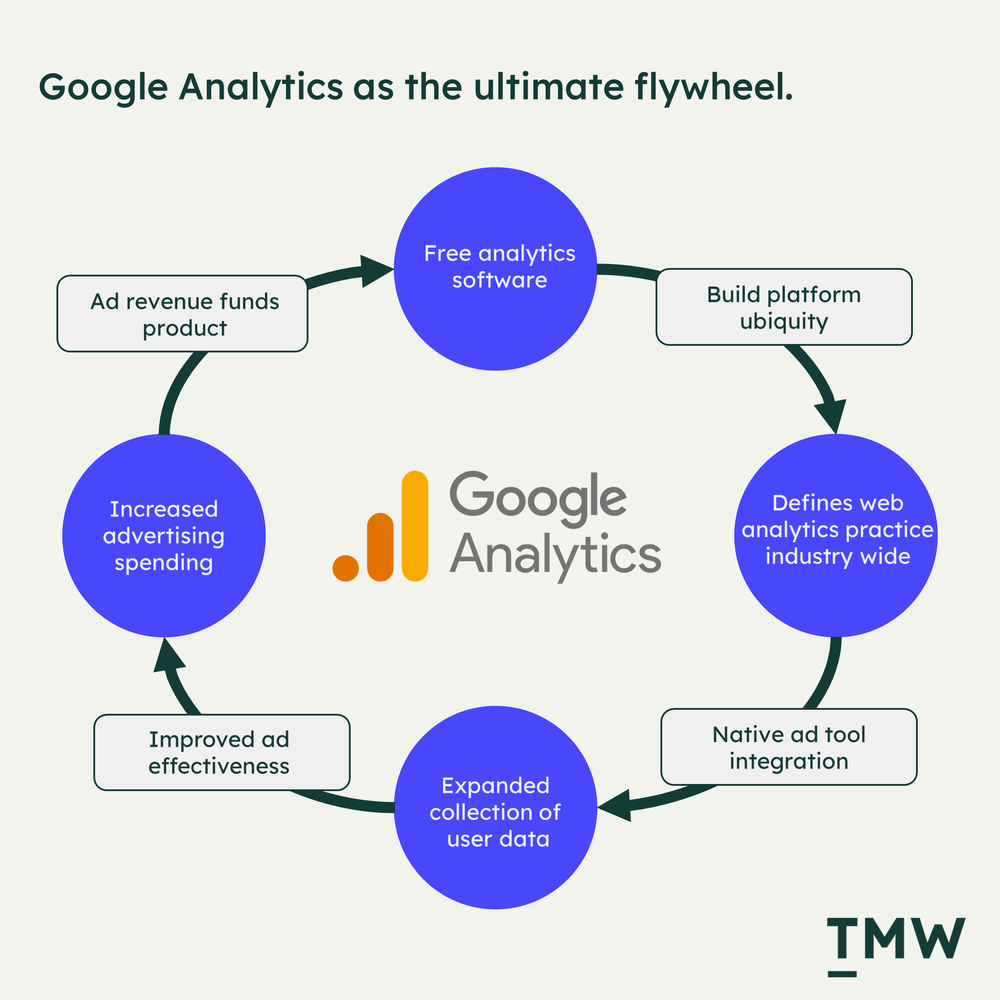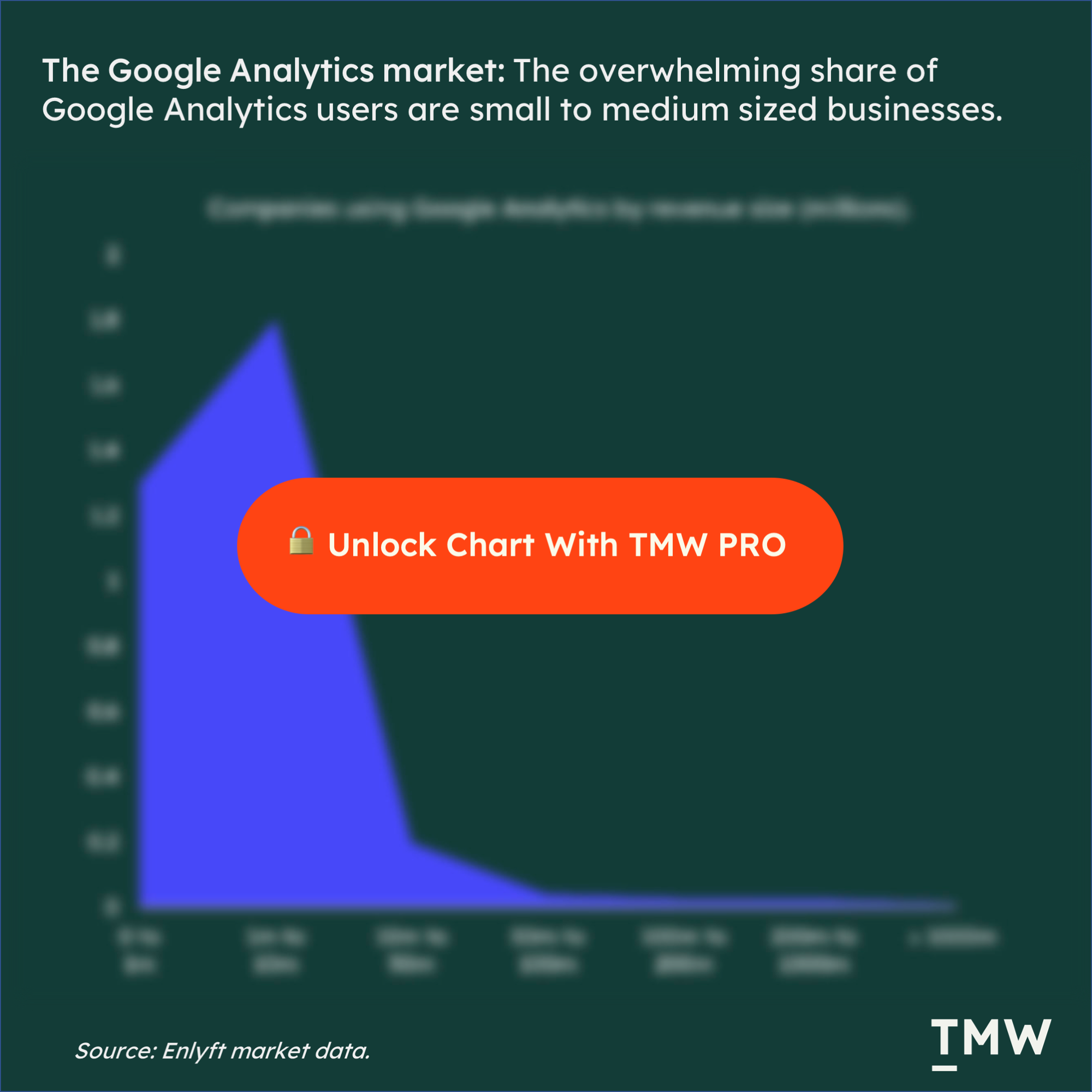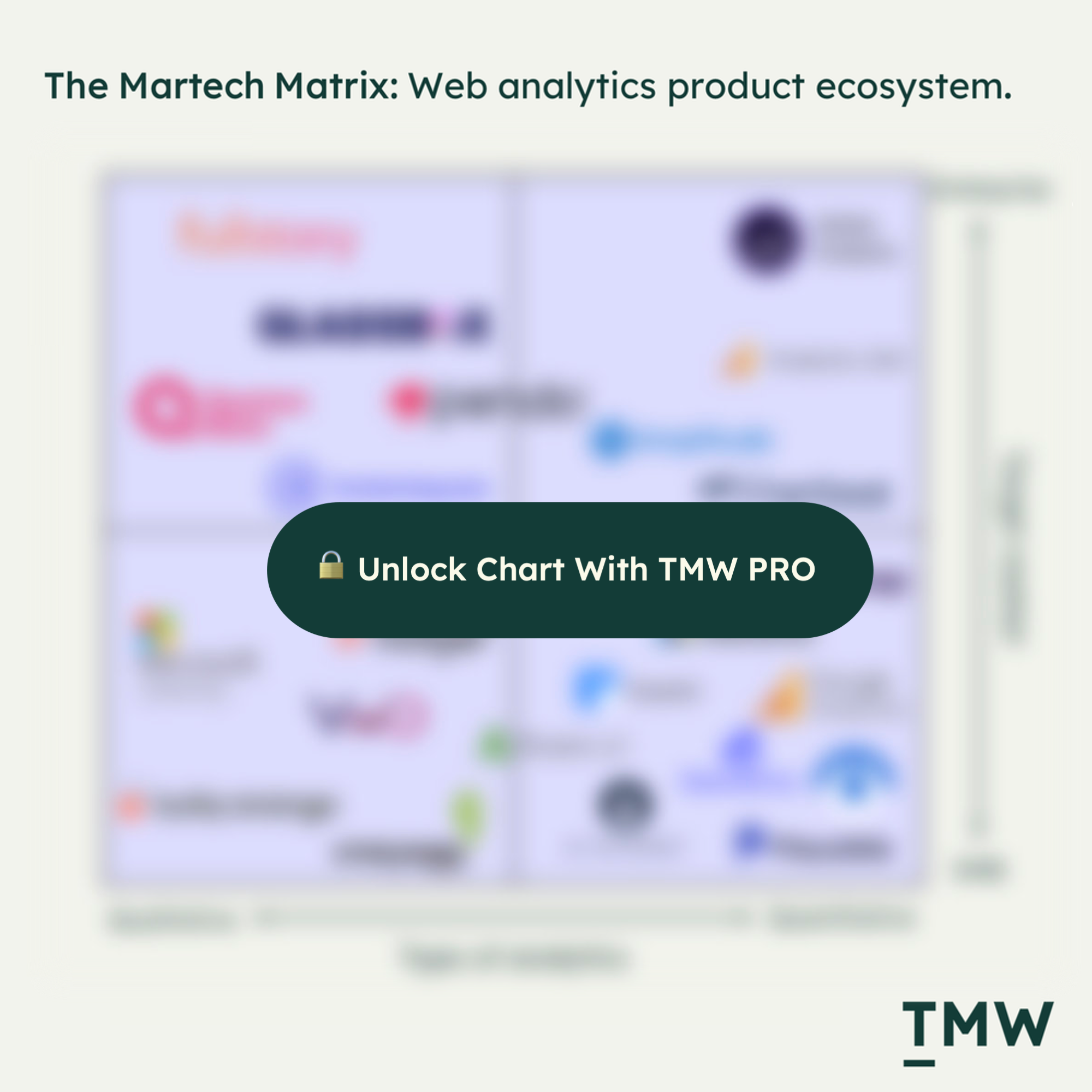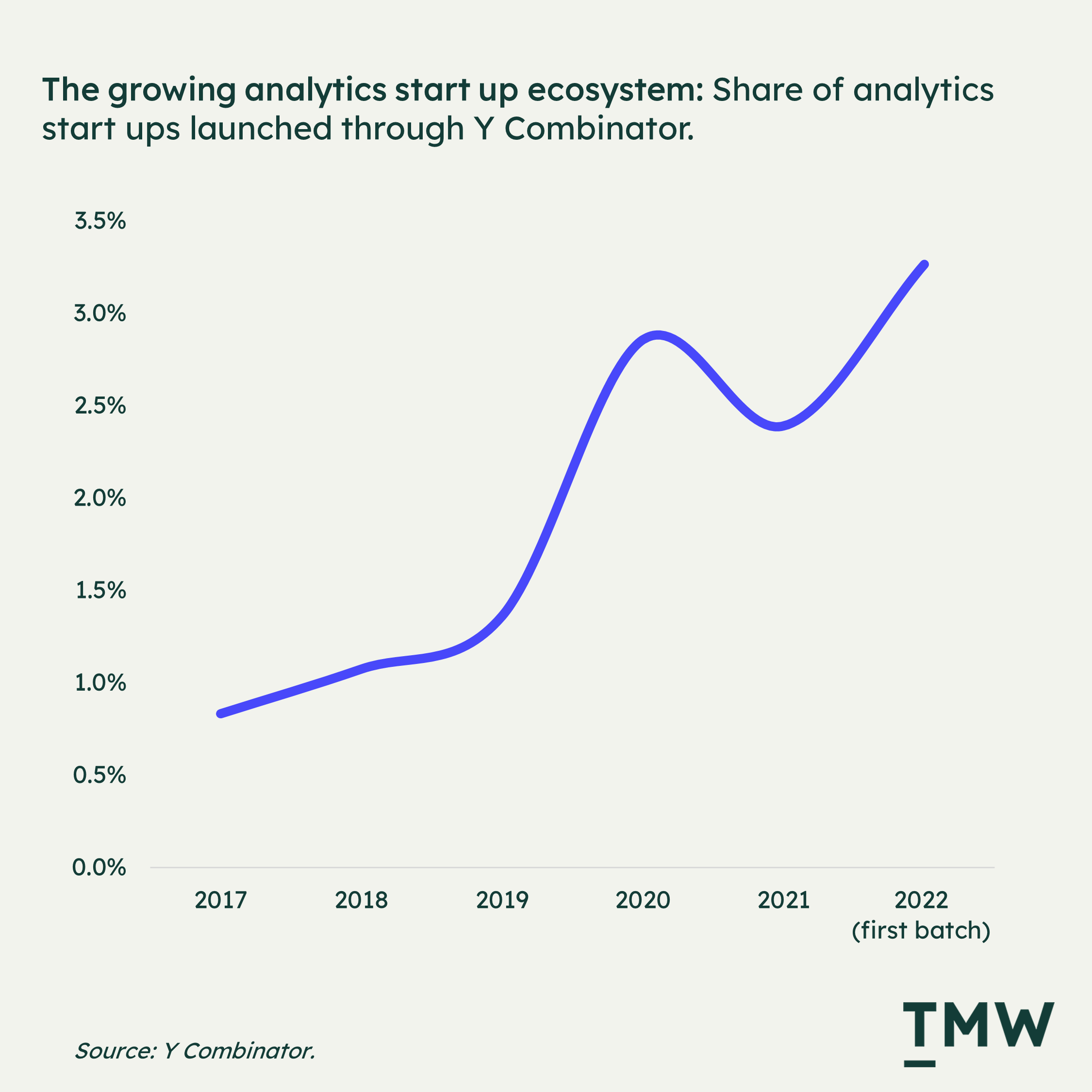TMW #127 | Replay: Google’s new chapter in web analytics
Welcome to The Martech Weekly, where every week I review some of the most interesting ideas, research, and latest news. I look to where the industry is going and what you should be paying attention to.
👋 Get TMW every Sunday
TMW is the fastest and easiest way to stay ahead of the Martech industry. Sign up to get the full version delivered every Sunday for this and every TMW, along with an invite to the TMW community. Learn more here.
Hi everyone, Juan here. During my travels from the United States to Australia, I became the recipient of a surprise souvenir—a pesky virus— It seems that even viruses can't resist joining in on the adventurous spirit of travel! So, I’m taking this weekend as a chance to rest up. But like a lot of you, you’re probably thinking about that annoying timer that keeps popping up in your Google Analytics account:

At least I have, and it’s a frustratingly annoying reminder that come July 1st, the version of Google Analytics (GA3) that so many of us grew up learning is heading to Google’s dustbin of dead apps, to be replaced by the radically different GA4.
The migration date is coming up next month. So in lieu of an essay this week, here’s a replay of an April 2022 essay from TMW #077. In it, I analyze Google Analytics’ impact on the Martech industry, its brilliant business model, the topic of tech indoctrination, the growing startup category of “anti-Google” alternatives, and where things might be headed next for web analytics. It’s as relevant a year ago as it is today.
We’ll be back next week with our regular essay. For now, enjoy and stay curious.
A new chapter in web analytics
I started my career watching Google Analytics training videos. They were seriously dated, but surprisingly comprehensive and an easy way to understand how measurement on the internet works. Most importantly, it was free and came with website analytics software I could use without having to pull out a credit card. In many ways, Google Analytics democratized data collection and created one of the most ubiquitous B2B SaaS products on the web, making the ability to analyze website performance in arms reach for millions of people.
Today, that picture is changing.
During the GA4 rollout, my LinkedIn and Twitter have been filled with complaints about a new chapter for Google Analytics – the transition from GA3 to GA4. This is a somewhat significant change in how data is collected and managed in the platform, requiring businesses to completely re-platform to the new version and embrace a totally new data architecture.
The forced cutover to Google Analytics 4 represents the entire online analytics supply chain changing around us, marking one of the most significant periods of internet history.
Companies are both becoming more mature in how they measure, but also more concerned about protecting the privacy of their customers. GA4 is seemingly working towards both aims; a more private web analytics software that is more geared towards apps and digital products.
Web analytics, according to Google
The most interesting thing about Google Analytics is how it changed the web analytics market. What Google did to publishing, it also did to data. What I mean by this is that Google was a significant technological contributor to shaping the internet we have today, and this also includes how we think about the data we collect and analyze from websites.
Google’s search product created an expectation in the consumer’s mind that almost any piece of information should be instantly accessible and free. By doing so, over time, this disrupted the entire media industry. Scott Galloways put it this way – “the worst business decision across print media firms of the last 50 years was to let Google access our data.”
By creating the conditions that gave rise to a new value exchange for content, something that was previously paid for in the old economy is now expected for free. Google created an extractive ecosystem designed to collect as much personal data as possible for advertising products.
Google also did this to how we approach the software we use to measure the effectiveness of our websites. Driven by delivering value to advertisers, Google acquired Urchin in 2005 and rebuilt it as a free analytics tool that quickly became one of the company’s most successful products through sheer user adoption and retention. Google Analytics is not just another app; it’s the way most of us think about website data.
Something that I wished analysts asked more often is: why would Google invest significant resources in a free product like Google Analytics? There are two answers to this question.
The first is clearly to collect more data to feed the company’s vast treasure trove of targeting options across their advertising products, in a deeper sense than what a website crawler does for Google Search. With the platform installed on your website, Google sees far deeper into websites and their visitors, further enriching an already immense data asset.
The second – and most important – reason is to establish a way of thinking about web analytics for marketers that is highly aligned with advertising. The purpose of Google Analytics was to educate business website managers and normalize how Google sees the world in terms of internet data. The product literally popularized concepts like bounce rate, page views, and conversion rate, and cemented our understanding of online channels through its default groupings of various traffic referrers like social media or email. You can’t really work in the web analytics industry without understanding Google Analytics.
A brilliant business model
Analytics products are incredible retention machines. It’s extremely painful to move to a new platform because the value of the product is about gaining a historical view of website performance and insight. Switching to something else breaks the historicity and the value of a consistent view.
This is why many enterprise brands still use Google Analytics: because of Google’s ability to integrate its own advertising products into the system and do things like attribute ad campaigns to onsite events like sign-ups and conversions. This creates the kind of vendor lock-in that’s rarely seen anywhere else.
If you’re running ads on Google, then using Adobe Analytics to manage attribution and performance measurement creates more work for integration and data matching between platforms. Most brands run campaigns on Google, creating a virtuous flywheel of education, product awareness, data collection and advertising spending.

This is why Google’s forced transition to GA4 is such a big deal. The next iteration of Google’s internet-defining analytics tool breaks ties with previous versions in several ways, the most significant being the bold move to cut data flows from GA3, meaning that you’ll need to set up a new instance and start a new historical record.
Old and new
GA is a radical step change to how we approach analytics. Some of the major changes include removing the concept of the bounce rate, replacing pageviews with events to be more in line with the app-suited Firebase product, and offering multi-touch attribution models to move past the cookie-centric approach to GA3.
There is some good stuff in GA4, too, with less sampling and a better ability to measure interactions across a journey and in single-page applications – things that weren’t really asked for back in 2013 when GA3 first came out.
All these changes seem trifling, but when it comes to attribution, it’s not a small thing if you’re an eCommerce retailer driving millions of dollars through your website every year. I’ve worked with brands in the past that would hire and fire based on what Google Analytics is telling them.
In one embarrassing moment, I remember having a discussion with a colleague talking about a hard time one digital marketing manager was having after reporting a drop in purchase conversions from social ads. But they forgot that at their size, and because they were using the free version of GA3, Google samples that data from what it collects, which does not give you a clear picture of the total impact. Still, that person struggled to convince leadership that she was indeed doing a good job, and that they should get more budget.
It's breathtaking how much trust a company will place on a free tool they barely understand. But this is gradually changing. With more maturity and budgets opening up as brands continue to digitize, there’s an important shift in how data is being collected and used on the web, and more rigor put into what kinds of tools brands use to manage it.
Google by far has the largest market presence and an army of people that literally learned how to do analytics on its platform. People like yours truly. This is the kind of brand moat that will be hard to dismantle, no matter how hard you try. Regardless, Google’s users overwhelmingly skew to smaller businesses, which has opened opportunities for companies like Adobe to build web analytics tools for the enterprise and win.

The migration opportunity
More companies than ever are taking segments of the analytics market from Google. This is partly caused by changes in data ethics and the maturing needs of various types of businesses. It’s rare these days to see a product manager rely on Google Analytics to get customer insights. Instead, they might want to use something like Heap Analytics, Fullstory, Mixpanel, or Amplitude. This is a clear niche in the market that Google has overlooked in its product strategy, and one which is being exploited.
The reason for this is that Google’s product strategy is to deliver value for advertisers, and the way Google Analytics was built was to meet these needs. The other change among companies using digital analytics tools is the increasing pressure to conform to a growing privacy regulation environment. Two companies exploiting the transition to a more private web are Plausible and Fathom - cookieless and GDPR-compliant products that offer the same features of Google Analytics, but as a subscription SaaS tool.
Others focus on the more qualitative ways to understand what people are doing on websites to differentiate. Companies like Fullstory and Content Square offer ways to understand the experience of a user by combining hard website metrics with intent signals, friction triggers, and even recording user interactions to try and answer both the “what” and “why” questions of website behavior.
Across both qualitative (why) and quantitative (what) website analytics platforms, all the opportunities remain at the enterprise level. The small to medium business market is very crowded, and when you have a free tool like Google Analytics that works very well, the ability to compete is very difficult.

The forced shift to GA4 will likely trigger new start-ups that can target smaller, digitally-reliant brands in various verticals. It would be wonderful to see more web analytics platforms that are geared to eCommerce or publishing specifically, as each vertical has different needs and a variety of ways to measure performance.
In the near term, it’s hard to see Google Analytics unseated as the undisputed dominant platform for web analytics, but companies are trying. Y Combinator, the incubator that helped launch analytics start-ups like Amplitude, is seeing increasing amounts of new analytics companies launched in their network. With Google forcing everyone on the planet to re-platform to GA4, expect more start-ups trying to seize the day.

For now, we’ll probably have to endure more complaining while the analytics community starts the great re-implementation. As companies are forced to embrace Google's new vision for analytics with GA4, now, more than ever, is an opportunity to rethink how we track users and understand what it means for business.
Stay Curious,
Make sense of marketing technology.
Sign up now to get TMW delivered to your inbox every Sunday evening plus an invite to the slack community.
Want to share something interesting or be featured in The Martech Weekly? Drop me a line at juan@themartechweekly.com.
